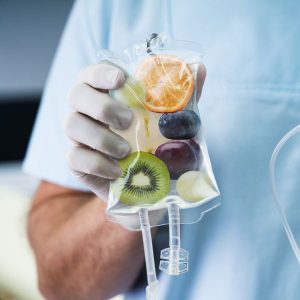 The following article was recently posted in the Wall Street Journal. I’m so pleased to see this treatment for allergies getting the exposure it deserves. I have treated patients with sublingual immunotherapy, (otherwise know as ‘allergy drop therapy’) in lieu of injections for years and have seen great success.
The following article was recently posted in the Wall Street Journal. I’m so pleased to see this treatment for allergies getting the exposure it deserves. I have treated patients with sublingual immunotherapy, (otherwise know as ‘allergy drop therapy’) in lieu of injections for years and have seen great success.
From The Wall Street Journal, By Laura Johannes
“An increasingly popular alternative to allergy shots is a sweet-tasting liquid taken under the tongue at home.
The treatment, called “sublingual immunotherapy,” has been proven effective in several recent large studies. It is available in Europe in tablet form, and in the U.S., doctors repurpose the liquid extracts of allergens used in shots for delivery under the tongue with an eyedropper, syringe or hand pump.
While sublingual allergy therapy isn’t yet approved by the Food and Drug Administration, doctors can legally use the material approved for shots in other ways. Sublingual immunotherapy can be given year-round or during allergy season and a few months before it. At least one major published study has shown that year-round use for three years resulted in long-term benefit after the therapy was stopped.
“It’s a great option for people whose lifestyle does not allow them to come into the doctor’s office every week,” says Mark Zacharek, director of the Michigan Sinus Center at the University of Michigan Health System in Ann Arbor.
In allergies, the body mistakes a harmless substance—such as tree pollen—for an intruder and mobilizes its defenses. The result is allergic rhinitis, the familiar syndrome of congestion, runny nose, sneezing and itchy and water eyes. Medications can temporarily relieve the misery but only immunotherapy, which gradually desensitizes the body, treats the cause.
Because of the inconvenience of shots, typically given weekly or twice weekly for months, only about 5% of U.S. allergic rhinitis patients get them, estimates Linda Cox, a Fort Lauderdale, Fla., allergist and president elect of the American Academy of Allergy, Asthma & Immunology, a Milwaukee, Wis., professional organization.
Another advantage of sublingual therapy is that it appears to carry less of a risk of anaphylaxis, a severe allergic reaction that has caused deaths in people getting allergy shots. So far in millions of sublingual doses given world-wide there have been no reported deaths, says Stephen R. Durham, head of the section for allergy and clinical immunology at Britain’s National Heart & Lung Institute at Imperial College in London, and a consultant to Denmark’s ALK-Abelló AS, which sells sublingual allergy tablets in Europe. Side effects of sublingual immunotherapy can include an itchy mouth and tingling in the throat, scientists say.
Patients should be cautious, scientists say, as a lack of established dosing guidelines has resulted in some doctors giving doses too small to be effective or combining extracts in ways that are unproven. “There’s been a little bit of a rush to the gate” and not all doctors are basing their dosing on good scientific data, says Dr. Cox.
The data is strong for timothy grass, often found in meadows. There is a growing number of good studies on ragweed, and some work on dust mites and cat dander. Sublingual therapy for mold and dog dander hasn’t been studied adequately and doses aren’t established, says Bryan Leatherman, a Gulfport, Miss., physician and chairman of the sublingual immunotherapy task force at the American Academy of Otolaryngic Allergy, a group of ear, nose and throat doctors.
Doctors disagree on whether the therapy will work for people with multiple allergies. “If you are multiply allergic to three or four things, such as, grass, dust mites and cats, the best way to treat you is still shots,” says Peter Socrates Creticos, associate professor of medicine at Johns Hopkins School of Medicine in Baltimore. Dr. Creticos does paid consulting for several companies developing sublingual products.
At least three companies, including Merck & Co., are funding big U.S. studies with the aim of getting products approved in coming years.
At the AAAAI’s annual meeting in Orlando, Fla., in March, scientists presented four North American studies encompassing 2,133 patients showing effectiveness for ALK-Abelló’s separate grass and ragweed tablets, which Merck is developing in the U.S. Dr. Cox presented data from a U.S. study with 473 patients that found a tablet from France’s Stallergenes SA containing a mix of five grass allergens yielded a 28.2% improvement over placebo on the “combined symptom” scale, which measures symptoms and the amount of medication used to control allergies, Dr. Cox says.
And in June, Greer Laboratories Inc., Lenoir, N.C., announced that a 429-patient study of sublingual administration of its ragweed extract found a 43% reduction in combined symptoms. The data is “preliminary,” pending full analysis and publication, cautions Dr. Creticos, principal investigator. The rating scale is scored differently in each company’s study so studies can’t be compared directly, he says.”


















